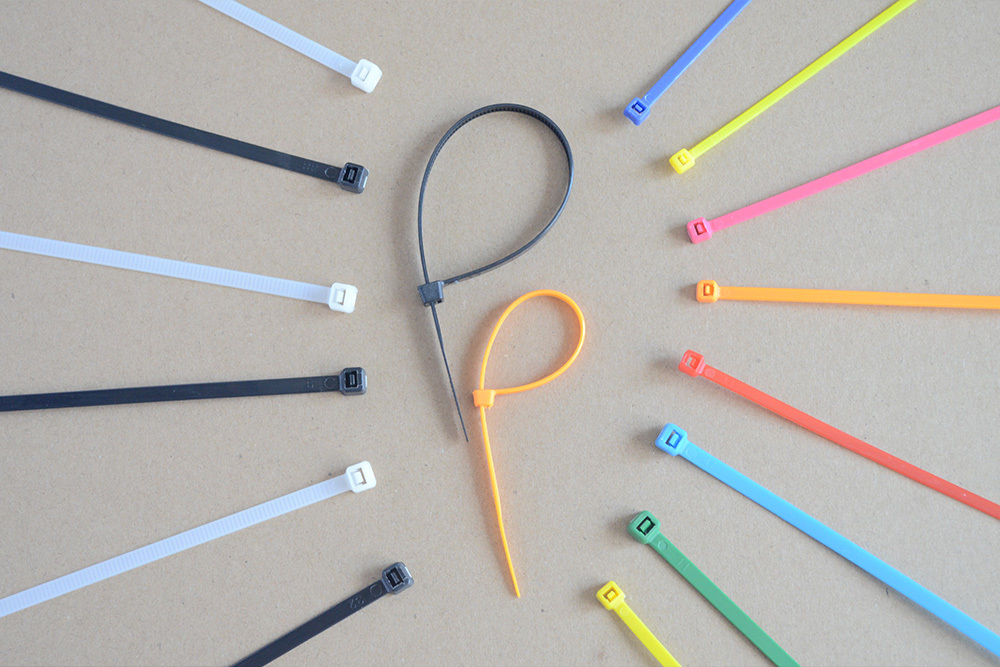16
2025
-
11
Performance of flame-retardant V0 grade plastic cable ties
Author:
Performance Characteristics of V0-Rated Flame-Retardant Plastic Cable Ties
Fire Resistance and Safety Compliance
V0-rated flame-retardant plastic cable ties are engineered to meet the stringent UL94 V0 standard, the highest vertical burning test classification under Underwriters Laboratories’ protocols. This certification requires samples to self-extinguish within 10 seconds after flame removal during two 10-second exposure cycles, with no flaming drips that could ignite cotton placed below. Materials achieving this grade demonstrate minimal flame propagation and heat release, making them critical for applications where fire containment is non-negotiable.
Industries such as data centers, aerospace, and public transportation rely on V0-rated ties for internal wiring systems. In these environments, a single ignition source could escalate into catastrophic failures. The ties’ ability to suppress flame spread reduces secondary fire risks, aligning with global safety regulations like the EU’s RoHS and REACH directives. Testing laboratories validate compliance through controlled burns, measuring ignition time, dripping behavior, and residual glow after flame removal.
Material Composition and Thermal Stability
The core material for V0-rated ties is typically polyamide 66 (PA66), a nylon variant prized for its mechanical strength and heat resistance. To achieve V0 certification, manufacturers incorporate non-halogenated flame retardants such as phosphorus-based compounds or metal hydroxides. These additives decompose endothermically during combustion, absorbing heat and releasing water vapor to dilute flammable gases. Unlike halogenated alternatives, they produce minimal smoke and toxic byproducts like hydrogen chloride, which can corrode equipment and harm occupants.
Thermal stability extends beyond fire scenarios. V0-rated ties maintain structural integrity in extreme temperatures, with operational ranges spanning -40°C to 130°C. This duality—resisting ignition while enduring cold—makes them suitable for outdoor infrastructure in polar regions and desert climates. Advanced formulations also resist UV degradation, preventing brittleness in sunlight-exposed installations like solar farms or maritime equipment.
Mechanical Durability and Environmental Adaptability
V0-rated cable ties are designed to withstand physical stresses without compromising fire safety. Reinforced with short glass fibers (0.3–0.5mm), the PA66 matrix achieves tensile strengths exceeding 8 kgf, ensuring secure bundling under vibration or load. This reinforcement balances flexibility and rigidity, preventing breakage during tightening yet allowing easy handling during installation.
Environmental adaptability is another hallmark. The ties resist acids, alkalis, and oils, making them viable in industrial settings with chemical exposure. Their low water absorption rate minimizes swelling or weakening in humid conditions, a critical feature for underground cabling or marine applications. Additionally, the absence of toxic halogens simplifies recycling, aligning with circular economy principles by reducing contamination in waste streams.
Long-Term Reliability and Maintenance
The lifespan of V0-rated ties far exceeds standard alternatives due to their resistance to thermal cycling and aging. Repeated exposure to high and low temperatures—common in automotive engine compartments or HVAC systems—does not degrade their flame-retardant properties. This longevity reduces replacement frequency, lowering lifecycle costs and environmental impact.
Maintenance teams favor V0-rated ties for their consistent performance. Unlike ties with inferior flame ratings, they do not require frequent inspections for cracks or brittleness, even after years of use. Their color stability also aids in visual identification during routine checks, ensuring compliance with safety protocols in complex wiring systems.
Applications in High-Risk Environments
V0-rated ties dominate sectors where failure is unacceptable. In healthcare, they secure medical device cabling in operating rooms, where flammable gases and electrical equipment pose dual risks. The aerospace industry uses them for aircraft wiring harnesses, adhering to FAA regulations that mandate V0 compliance for all non-metallic components. Similarly, renewable energy projects deploy these ties in solar panel arrays and wind turbine nacelles, where remote locations complicate fire response efforts.
Public infrastructure projects, such as rail systems and tunnels, also prioritize V0-rated solutions. Their ability to contain fires prevents cascading failures in confined spaces, protecting passengers and critical systems. Even in consumer electronics, manufacturers integrate V0-rated ties into device internals to meet safety certifications like UL or IEC 62368-1.
Certification and Quality Assurance
Achieving V0 certification involves rigorous third-party testing. Samples undergo vertical burns, horizontal flame spread assessments, and glow wire tests to simulate overheating scenarios. Laboratories also evaluate smoke density and toxic gas emissions, ensuring compliance with international standards like IEC 60695-11-10. Manufacturers must document every batch’s consistency, using automated injection molding and precision quality control to eliminate defects.
Certifications extend beyond flame resistance. V0-rated ties often hold ISO 9001 accreditation for manufacturing excellence and CE marks for EU market access. Some formulations meet military specifications (MIL-STD) for durability in combat vehicles or naval ships. These layers of validation assure end-users of the ties’ reliability in mission-critical applications.
plastic cable ties
Hot News
2025-11-16
Performance of flame-retardant V0 grade plastic cable ties
V0-rated flame-retardant plastic cable ties are engineered to meet the stringent UL94 V0 standard, the highest vertical burning test classification under Underwriters Laboratories’ protocols. This certification requires samples to self-extinguish within 10 seconds after flame removal during two 10-second exposure cycles, with no flaming drips that could ignite cotton placed below.
2025-11-16
Low-temperature resistant nylon cable tie material formula
The foundation of low-temperature-resistant nylon cable ties lies in their carefully engineered material composition. The primary material is polyamide 66 (PA66), which accounts for approximately 65% to 75% of the total composition. PA66 is chosen for its inherent strength and high melting point, but its molecular chains become less active at low temperatures, leading to brittleness. To counteract this, specific additives are incorporated to enhance its low-temperature performance.
2025-11-13
The environmentally friendly features of halogen-free plastic cable ties
Traditional plastic cable ties often incorporate halogen-based flame retardants such as chlorine and bromine to enhance fire resistance. However, these halogenated compounds pose significant environmental threats.
2025-11-13
The anti-aging principle of UV-resistant plastic cable ties
Plastic cable ties, particularly those made from polyamide (PA66), are widely used in outdoor and industrial environments where exposure to ultraviolet (UV) radiation is inevitable.

